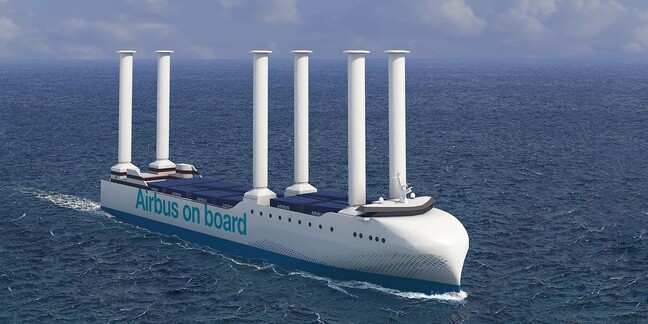The plane-maker on Thursday revealed it has “commissioned shipowner Louis Dreyfus Armateurs to build, own and operate these new, highly efficient vessels that will enter into service from 2026.”
The ships will have conventional engines that run on maritime diesel oil and e-methanol, the latter fuel made with a process that produces less CO2 than other efforts. Many ships run on heavy fuel oil, the gloopiest, dirtiest, and cheapest of the fuel oils. Airbus has therefore gone out of its way with the choice of diesel and e-methanol.
The ships will also feature half a dozen Flettner rotors, rotating cylinders that produce the Magnus effect – a phenomenon that produces lift thanks to pressure differences on either side of a rotating object. The rotors were invented over a century ago and are generating renewed interest as they reduce ships’ fuel requirements.
Here’s what they’ll look like on Airbus’s boats.
Airbus expects its three vessels to enter service from 2026 and has calculated they will reduce its average annual transatlantic CO2 emissions from 68,000 to 33,000 tonnes by 2030.[…]
The craft will have capacity to move around seventy 40-foot containers and six single-aisle aircraft sub assembly sets – wings, fuselage, engine pylons, horizontal and vertical tail planes. Airbus’s current ships can only move three or four of those sets.
The ships will most often travel from Saint-Nazaire, France, to an A320 assembly line in Mobile, Alabama. […]
Source: Airbus commissions three wind-powered ships • The Register

Robin Edgar
Organisational Structures | Technology and Science | Military, IT and Lifestyle consultancy | Social, Broadcast & Cross Media | Flying aircraft

